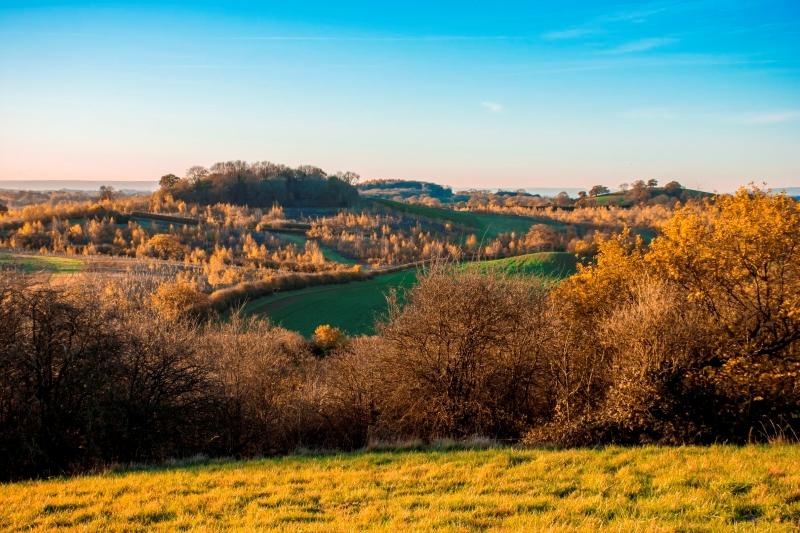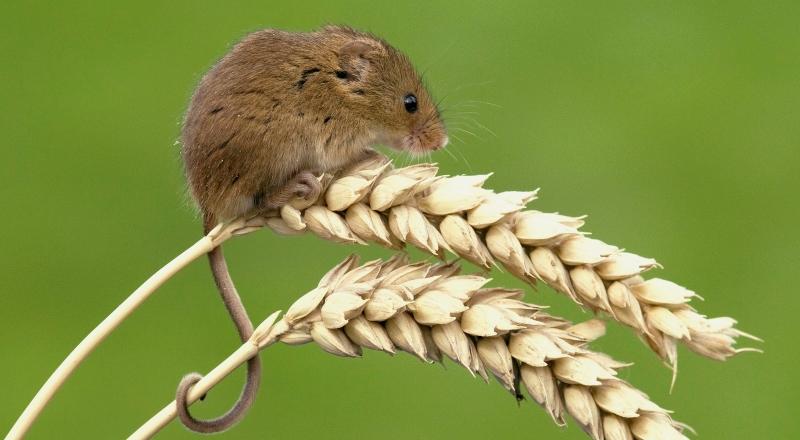
Hedgerows in the Forest
They are often overlooked, but hedgerows play a valuable role beyond simple boundary marking. In the Forest some of our hedgerows contain ancient woodland species and they all provide an array of food and homes for wildlife. Take a closer look at our hedgerows and you might be surprised at what you discover.
Hedgerows in the Forest
Many of our hedgerows are species rich, especially in the older, medieval field systems in the Spernal area of the Forest. Ancient hedgerows are defined as those that existed prior to the Enclosure Acts of 1720. The Enclosure Act laws between the 17th and 19th centuries saw much of Britain’s common land enclosed for agricultural and ownership purposes, resulting in more hedgerows appearing in our landscape, prior to loss in the 20th century as agricultural practices intensified and field sizes grew to accomodate mechanisation and larger agricultural machinery. Some of the trees found in these hedgerows in the Forest are around 300 years old, and you can also see ancient woodland indicator species such as like bluebells nestling in the hedge bottoms.
English hedgerows typically consist of hawthorn and blackthorn, but you will also see hazel, spindle, guelder rose and wayfaring tree in the Forest hedges. In contrast most of the hedgerows around Dorsington are Elm hedges, and this is one of few places where elm can still be found after most was killed by Dutch elm disease in the 1970’s.
Managing hedgerows in the Forest
Since 1945 we have lost over 300,000 miles of hedges in Britain due to either neglect or changing agricultural practices. In the Forest we are doing our bit to reverse this downward trend, planting native broadleaf trees such as oak along hedge lines and undertaking planned management to extend the life of the hedge.
Visitors to the Forest may think that our hedgerows look untidy as we let our internal hedgerows grow naturally and expand out, but this is great for nature. They are full of flowers, fruit and hibernation spots for wildlife. By leaving the hedgerows to grow there are nectar-rich blossoms in the spring and summer, extending the food source for our pollinators, and berries and fruits in autumn and winter.
North of the River Avon the predominate hedgerow trees are oak. Ash, however, is the predominant hedgerow tree in South Warwickshire and we will have to manage our hedgerows around Dorsington more closely as they succumb to ash die back.
In addition to managing existing hedges, we also consider hedges when designing new areas of the Forest and you will see many examples of new hedgerows planted. Our forestry team is working with our Biodiversity Manager to implement a programme of hedgerow planting to optimise biodiversity in the Forest.
Hedgerows for wildlife
Hedgerows are vital for wildlife as they provide a place to live, food and shelter, and a route of passage through the countryside. Our Chief Executive, Beth Brook, is a big fan:
“They are among my favourite things in and around the Forest. In fact if you have one in your garden, they’re like a mini-forest, and are a great way to extend the Heart of England Forest into more urban areas! They have their very own micro-climate, allowing animals and insects to thrive.”
At this time of year birds such as fieldfare and redwing can be seen flying across the tops of hedgerows, picking off tasty morsels, whilst hedgehogs and harvest mice nest and feed among them. At night bats use the linear nature of hedges as a navigation aid as they commute between their roosting sites and feeding areas.
Blackthorn in our hedges is especially valuable because the rare brown hairstreak butterfly only lays its eggs on relatively young blackthorn leaves. They overwinter as an egg, so you can hunt for them in the forks of branches during the colder months, then keep your eyes peeled for the beautiful adults in late July and August.
Hedgerows are excellent at linking woodlands together, providing wildlife corridors which act as ‘species super highways’ for a multitude of invertebrates and animals which travel among them unseen by predators. These corridors also help with seed dispersal as animal carriers as diverse as foxes, badgers and stoats use them as connections between difference parcels of land.

Create your own mini forest
Why not create your own mini forest in your garden? If you’re thinking of planting a hedge then pick native species, plant tightly, and in around five years you can have your very own hedgerow habitat. Hawthorne is a popular choice for hedges as it is also known as ‘quickthorn’ for a good reason! If you have old hedges that have seen better days, then you can rejuvenate them using the centuries old skill of hedge-laying. This encourages new growth and creates a living fence which can last for decades.
Visit the Forest
Next time you visit the Forest make sure you take a peek into the hedgerows, you’ll be amazed at what you can find. View and download our woodland walks here.


